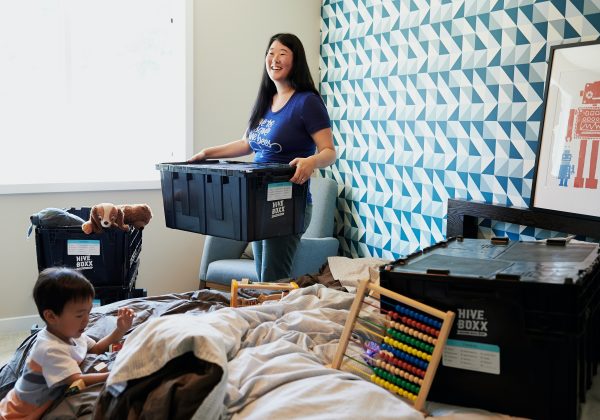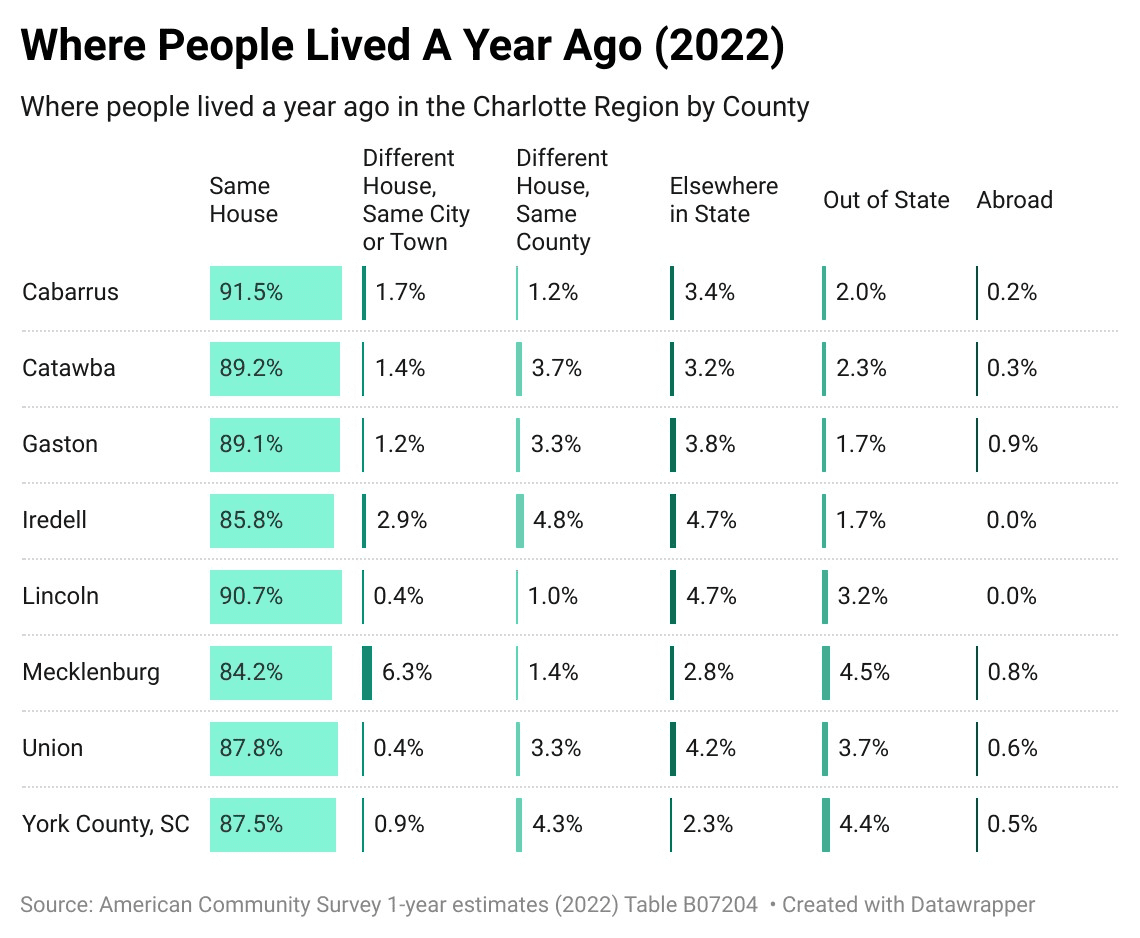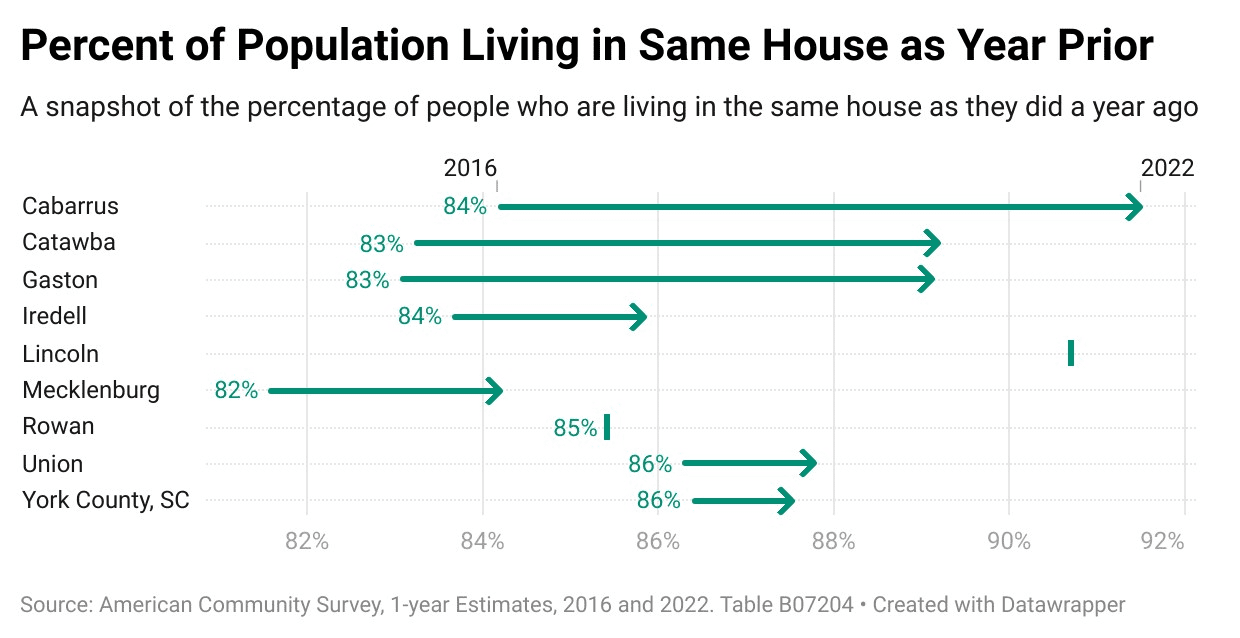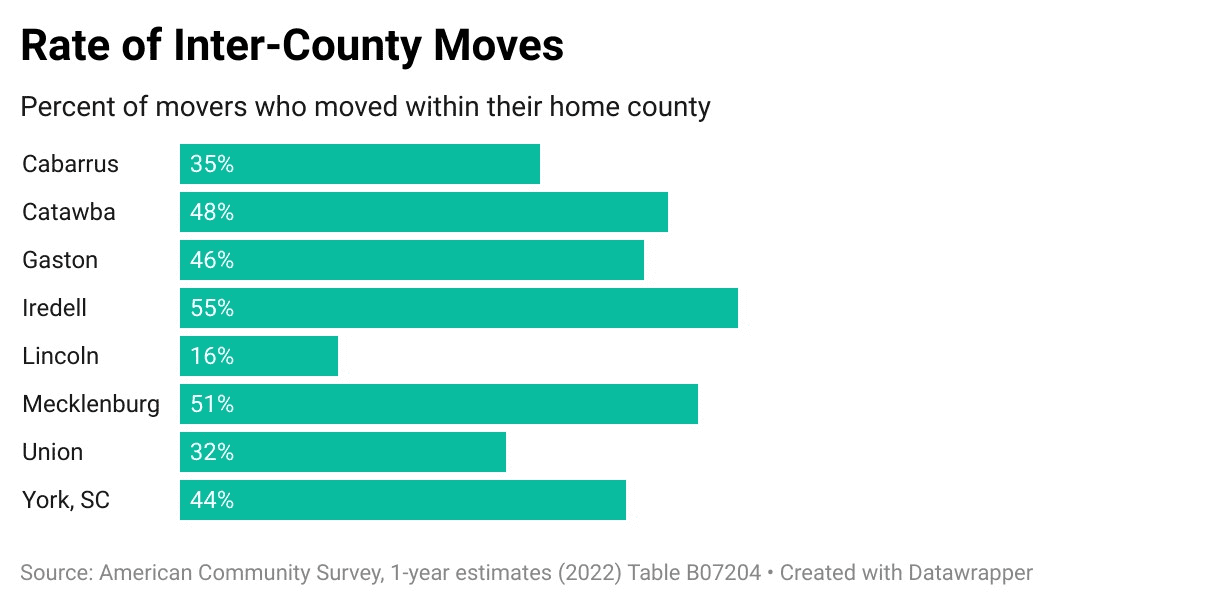Residential Mobility in the Charlotte Region

The Charlotte region is known for its dynamic and fast-growing population, but it turns out that more residents than ever are staying in place.
Residential mobility can be measured by looking at the percentage of people who have lived in their homes for a year or more – the longer people stay in their homes, year-to-year, the less residential mobility an area has. To put is simply, more established homes equal fewer moving trucks.
For the Charlotte region, here comprised of Cabarrus, Catawba, Gaston, Iredell, Lincoln, Mecklenburg, and Union counties – as well as York County, South Carolina -, the data shows that residential mobility is down compared to six years ago, and, in at least one county, down significantly since the pandemic.

The vast majority of people live in the same house as they did a year ago. Among counties in the region, between 84 and 91 percent of people are in the same house. These rates align with the national average of 87%, although the majority of counties, including Mecklenburg (84%) are lower, indicating higher levels of residential mobility than the nation as a whole.

Residential mobility has decreased in the last six years. Nationally, the percent of people living in the same house as they did the year prior increased from 85% in 2016 to 87% in 2022. Counties in the region saw an increase as well – with some counties seeing rapid increases. Cabarrus county increased from 84% to 91%, while Catawba and Gaston counties both went from 83% to 89%. These counties went from being more mobile than the entire nation to less. Mecklenburg County also saw a decrease in residential mobility, with the rate of ‘staying-put’ increasing from 82% to 84%.
The pandemic did not seem to significantly alter trends in residential mobility. Comparisons of the American Community Survey (ACS) 1-year estimates for 2016, 2019 (pre-pandemic), and 2022 (post-pandemic) show that decreases in residential mobility have remained relatively steady in Gaston and Catawba, as well as other counties. Only York County has seen fluctuations (a rise and then a dip) of residential newcomers in the past six years, with the percentage of people remaining in their homes for more than a year starting at 86% in 2016, dipping to 93% in 2019, and then increasing to 88% in 2022.

In-town moves are decreasing. According to the U.S. Census Bureau, the percentage of people moving in any given year has been on the decline, driven primarily by a decrease in same-county moves. At the local level, the percentage of residents moving within the same town between 2016 and 2022 decreased from 3.2% to 1.7% in Cabarrus County, from 3.3% to 1.2% percent in Gaston, from 8.6% to 6.3% in Mecklenburg, and from 2.9% to .4% in Union County.
Currently, fewer than half of moves are within the same county. Among movers in the Charlotte region, only those in Iredell and Mecklenburg County were more likely to be moving locally from one house to another. Meanwhile, in Lincoln County, only 16% of movers already called the county home, with most newcomers coming from elsewhere in the state.
Why does residential mobility matter?
A number of factors impact residential mobility and all of these factors relate to quality of life in our region:
- Areas with more new housing construction will have residents with a shorter length of tenure, including new movers.
- Housing drives local moves while jobs tend to drive those made across long distances.
- Family is oftentimes listed third, after jobs and housing, as a reason for moving.
- Demographic change – aging residents tend to be less mobile.
On one hand, high residential mobility reflects economic opportunity and a dynamic populace, while lower levels of mobility can help build feelings of community and affirm the local investment of residents.